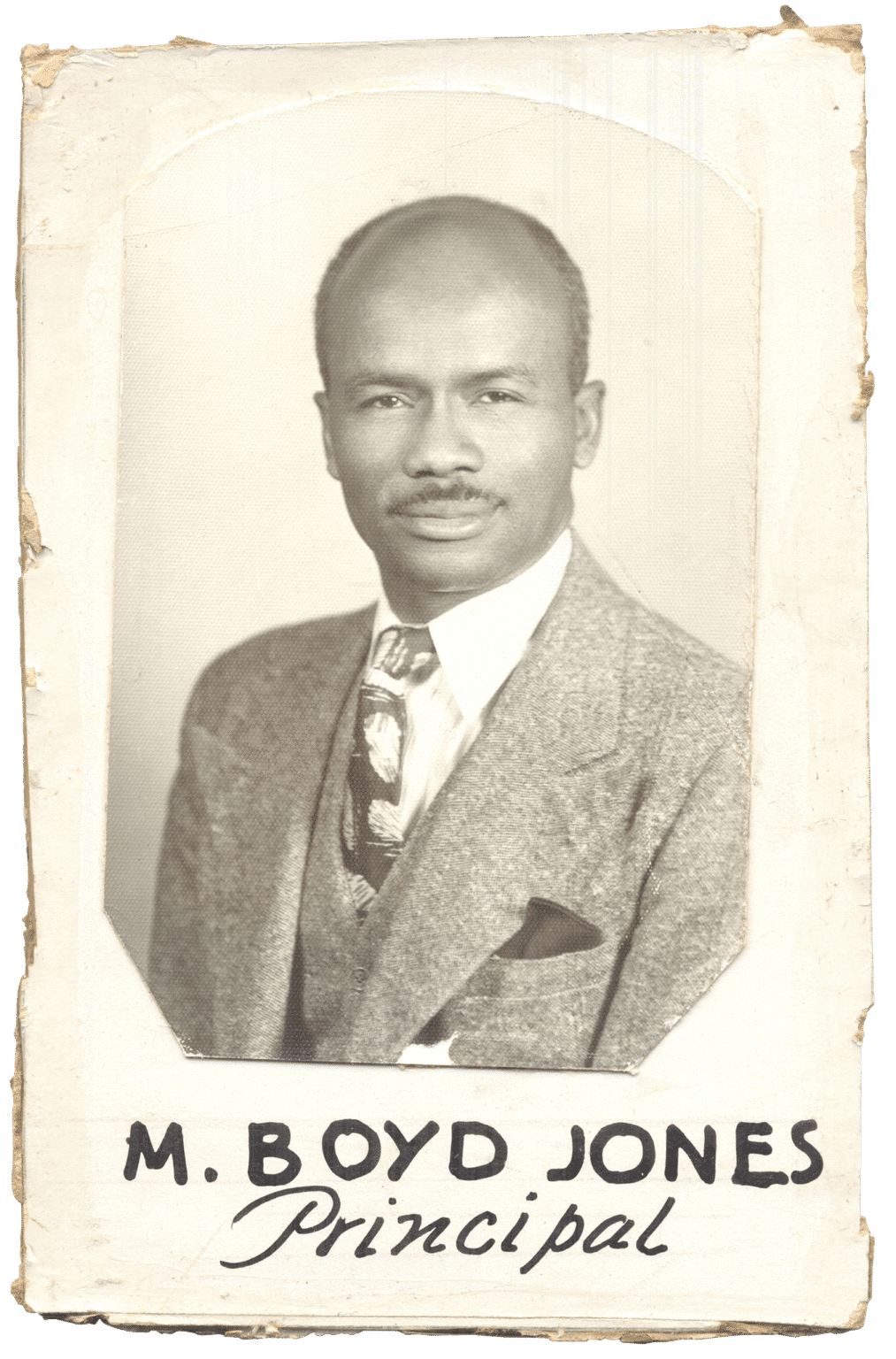RESOURCES
PEOPLE
M. Boyd Jones
1909-2007
M. Boyd Jones served as principal of Robert Russa Moton High School in Farmville, Virginia during a pivotal era in the fight for civil rights and equal education. A dedicated educator and community leader, Jones was principal during the early 1950s when Moton High School was overcrowded and woefully underfunded compared to the white schools in Prince Edward County. Despite the challenges, he worked to provide quality education and support for his students under the constraints of Virginia’s segregated school system.
As principal, Jones was known for his quiet dignity and strong sense of duty to his students. However, he had limited authority in the segregated school system, where decision-making power rested with white officials, most notably the superintendent of schools, T. J. Mcllwaine. Their relationship was defined by the racial and political tensions of the time. Meliwaine was committed to maintaining the “separate but equal” doctrine and resisted efforts to significantly improve Black schools beyond superficial measures. Jones, while advocating for better conditions, had to navigate this power imbalance carefully, aware that open confrontation could jeopardize his position and harm the students he served.
This delicate dynamic came into sharp relief during the 1951 student strike led by 16-year-old Barbara Johns. The protest, sparked by frustration with the school’s substandard conditions, caught both Jones and Mcliwaine off guard. Jones was not involved in organizing the strike and was reportedly concerned about the consequences for the students. In the aftermath, he walked a fine line— supporting his students rights while also maintaining professional obligations to a school board and superintendent resistant to change. His experience highlights the difficult position Black principals held under Jim Crow. They were expected to uphold a discriminatory system while serving as advocates and role models for their communities.
